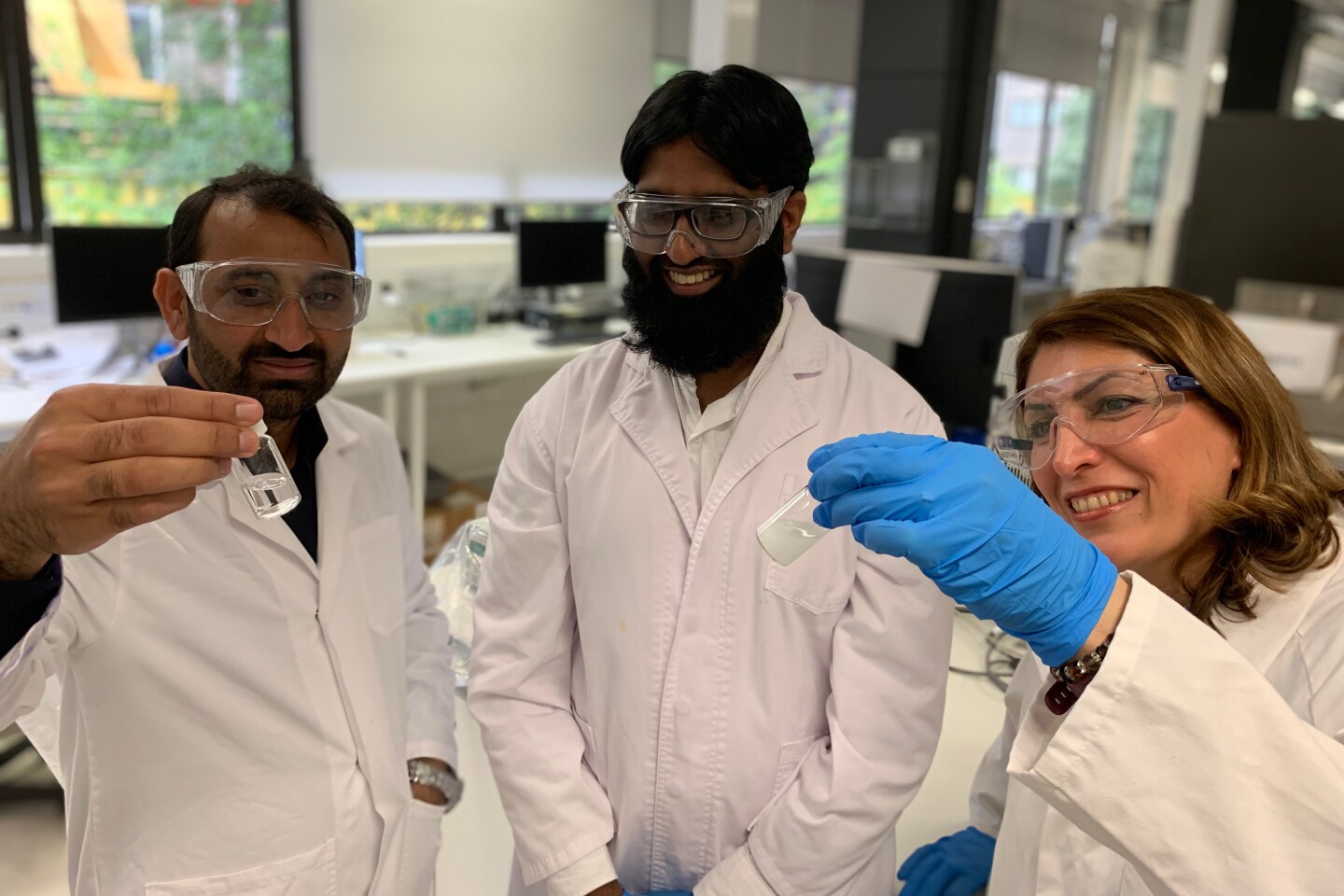While the purification of wastewater once just involved the removal of traditional pollutants, it now also entails the removal of microplastic particles. A new powder reportedly does the job much quicker and more thoroughly than has previously been possible.
Developed by a team of scientists at Australia's RMIT University, the powder would ideally get mixed into untreated wastewater at existing treatment plants. And while it just looks like a plain white powder to the naked eye, it's actually made up of microscopic, ferromagnetic "nanopillared structures."
Each one of those structures in turn consists of two sheets of metal organic framework (MOF) material, with an array of carbon-encapsulated iron oxide nanopillars sandwiched in a gap between them. This arrangement results in a large amount of surface area, to which even the smallest of passing microplastic particles cling.
Once the powder has been swirled around in the wastewater for a short time, a magnet is used to remove all the nanopillared structures, along with the microplastic particles they have adsorbed.
In lab tests, doing so successfully removed all of the particles from tainted water samples in just one hour – what's more, the structures could be reused up to six times. And as an added benefit, the structures also adsorbed methylene blue, which had been added to the water to represent more traditional dissolved pollutants.
By contrast, conventional purification techniques take days to complete, and even then aren't as thorough.

"Our powder additive can remove microplastics that are 1,000 times smaller than those that are currently detectable by existing wastewater treatment plants," said the lead scientist, Prof. Nicky Eshtiaghi. "We are looking for industrial collaborators to take our invention to the next steps, where we will be looking at its application in wastewater treatment plants."
The research is described in a paper that was recently published in the Chemical Engineering Journal.
Source: RMIT University





